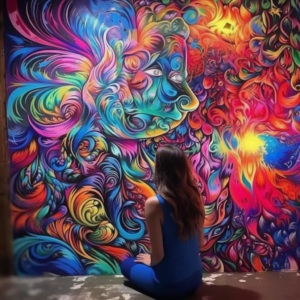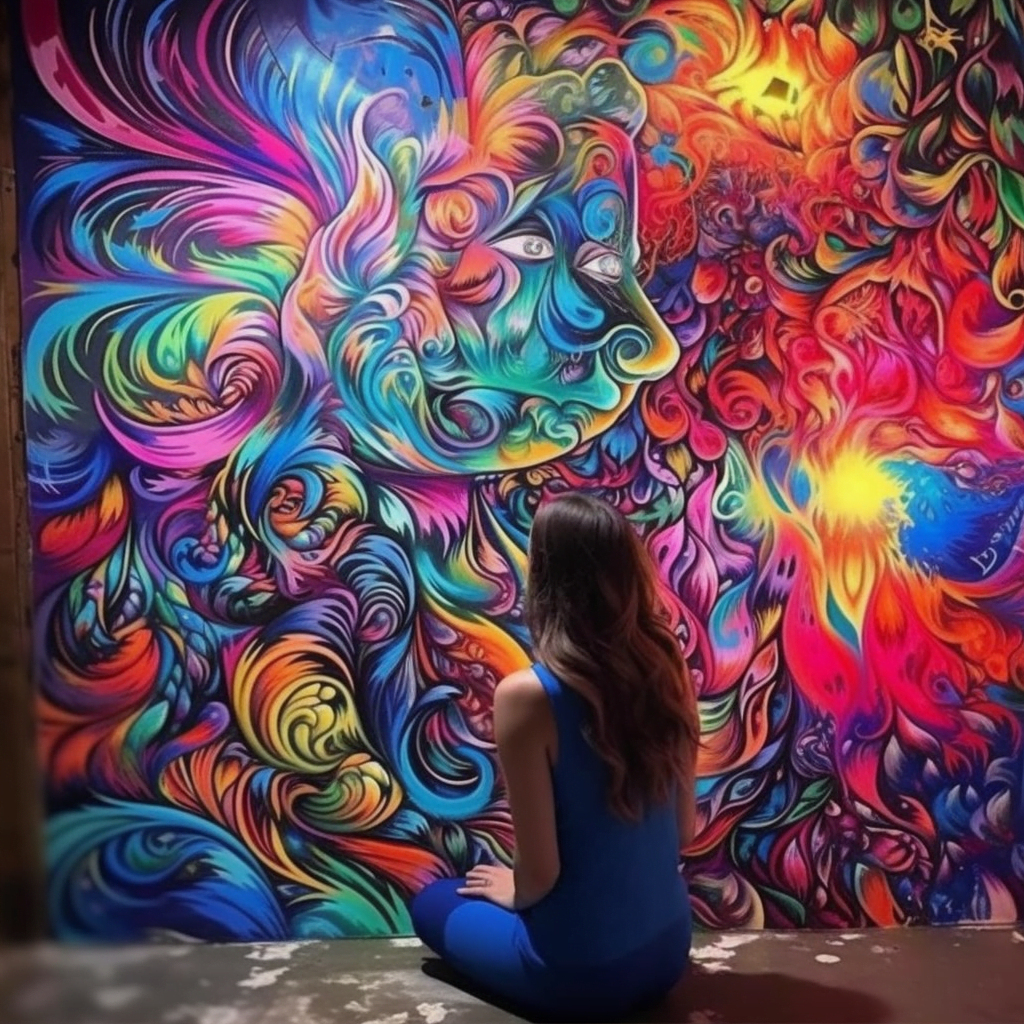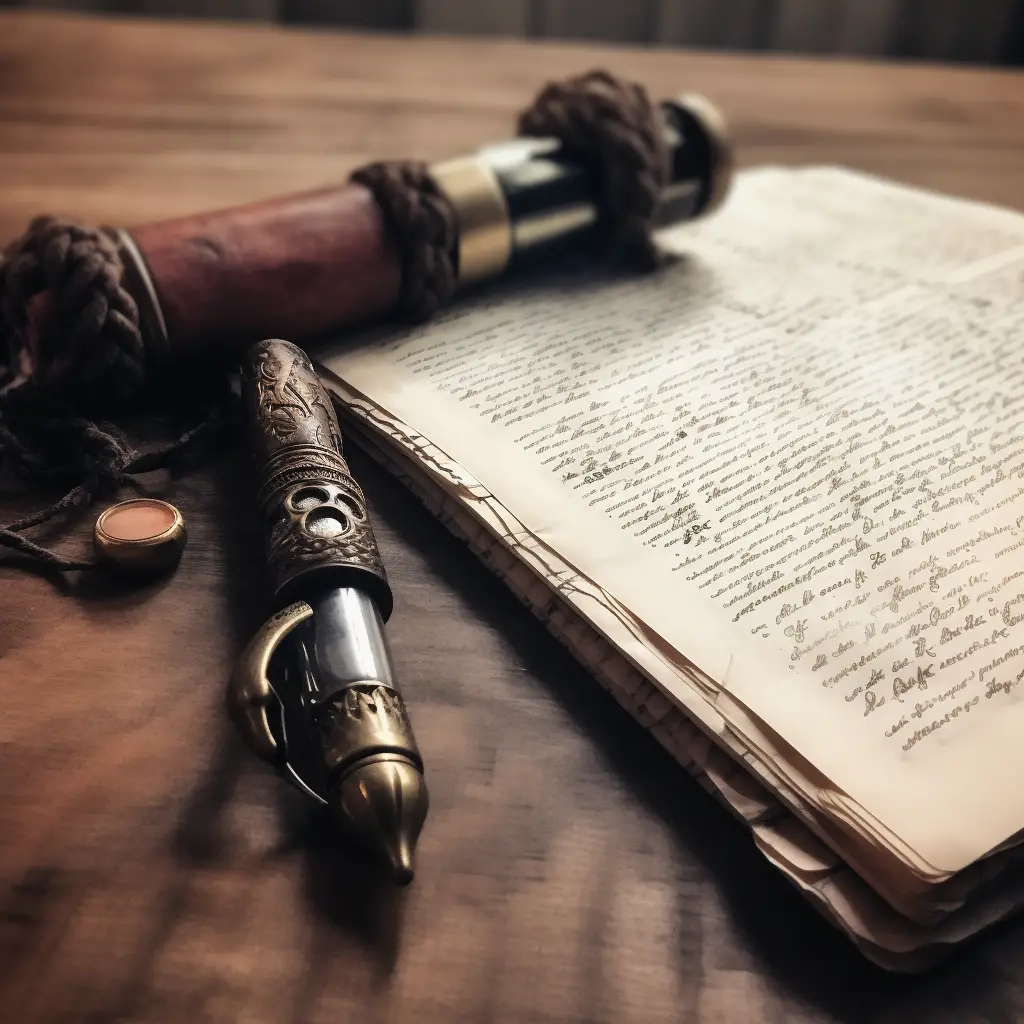
Ekphrasis is a type of writing that is created to evoke the visual appearance of a piece of art or a scene. It usually involves vivid descriptions and the use of figurative language to make the reader feel like they are experiencing the work of art themselves. It’s like a painting coming to life! For example, a poet might describe a sculpture as if it were a person, or a novelist might imagine a landscape as if it were a living being.
Ekphrasis Definition: A Literary Picture Show
Ekphrasis comes from the Greek words “ek” meaning “out” and “phrasis” meaning “speak.” When combined, these words create a term that describes the act of speaking or writing vividly about visual art or a scene. Think of ekphrasis as the wordsmith’s paintbrush, transforming a blank canvas of a page into a vibrant, colorful masterpiece.
The Role of Ekphrasis in Language: Breathing Life into Art
Ever been to a museum and wished the paintings could tell their stories? Well, with ekphrasis, they can! By using descriptive language and metaphorical expressions, writers can animate works of art and transport readers directly into the scene. This literary technique allows authors to bridge the gap between visual art and written language, making the reader feel as if they’re standing in front of the piece, experiencing it firsthand.
Ekphrasis in Literature: Timeless Art Narratives
Throughout history, talented writers have turned to ekphrasis to bring art to life in their works. For example, in the epic poem “The Iliad,” Homer provides an elaborate description of Achilles’ shield, which is a prime example of ekphrastic writing. Similarly, John Keats’ poem “Ode on a Grecian Urn” delves into the beauty and mystery of an ancient piece of pottery, capturing its essence through words.
Creating Ekphrastic Writing: A Step-by-Step Guide
Want to transform an art masterpiece into a literary sensation? Follow these steps to create captivating ekphrastic writing:
- Choose a work of art: Select a painting, sculpture, or other visual art piece that sparks the imagination. Look for a work that evokes strong emotions or tells a story.
- Study the details: Examine the artwork closely, paying attention to colors, textures, shapes, and the emotions it conveys. Consider the artist’s intentions and the context in which the piece was created.
- Imagine the story: Let the mind wander and envision the narrative behind the art. Consider the characters, setting, and plot, and how they connect to the work’s visual elements.
- Write vivid descriptions: Use descriptive language and figurative expressions to paint a picture with words. Employ similes, metaphors, and personification to breathe life into the scene.
- Revise and refine: Read the ekphrastic piece aloud, making adjustments to ensure the writing is evocative and engaging.
Examples of Ekphrasis: Written Works that Evoke Art
Explore these examples of ekphrastic writing to understand how authors use this technique to bring visual art to life:
- “The Picture of Dorian Gray” by Oscar Wilde: This classic novel centers around a portrait that mysteriously ages while its subject remains youthful. Wilde’s vivid descriptions of the painting make it a central character in the story.
- “My Last Duchess” by Robert Browning: This dramatic monologue describes a painting of the speaker’s deceased wife, revealing the sinister nature of the Duke as he tells the story behind the portrait.
- “The Girl with a Pearl Earring” by Tracy Chevalier: This historical novel imagines the story behind the famous painting by Johannes Vermeer, providing a richly detailed narrative that complements the visual artwork.
These examples illustrate the powerful effect ekphrasis can have on readers, enabling them to experience art through the magic of words.
The Art of Ekphrasis in Writing
Ekphrasis is a powerful literary technique that allows writers to bring visual art to life on the page. By using vivid descriptions and figurative language, authors can immerse readers in the world of art, making them feel as if they’re experiencing the piece firsthand. Whether it’s an ancient sculpture, a Renaissance painting, or a modern photograph, ekphrasis has the potential to turn any work of art into a captivating literary experience.
So, grab that literary paintbrush and start experimenting with ekphrasis. Whether it’s a poem inspired by a breathtaking landscape, a short story that revolves around a mysterious portrait, or a novel that delves into the world of art, using ekphrastic writing will help transport readers into the very heart of the scene. Remember, the beauty of art is only limited by imagination and the power of words!
If you’re thirsty for more writing knowledge, head over here to learn all 74 literary devices.





